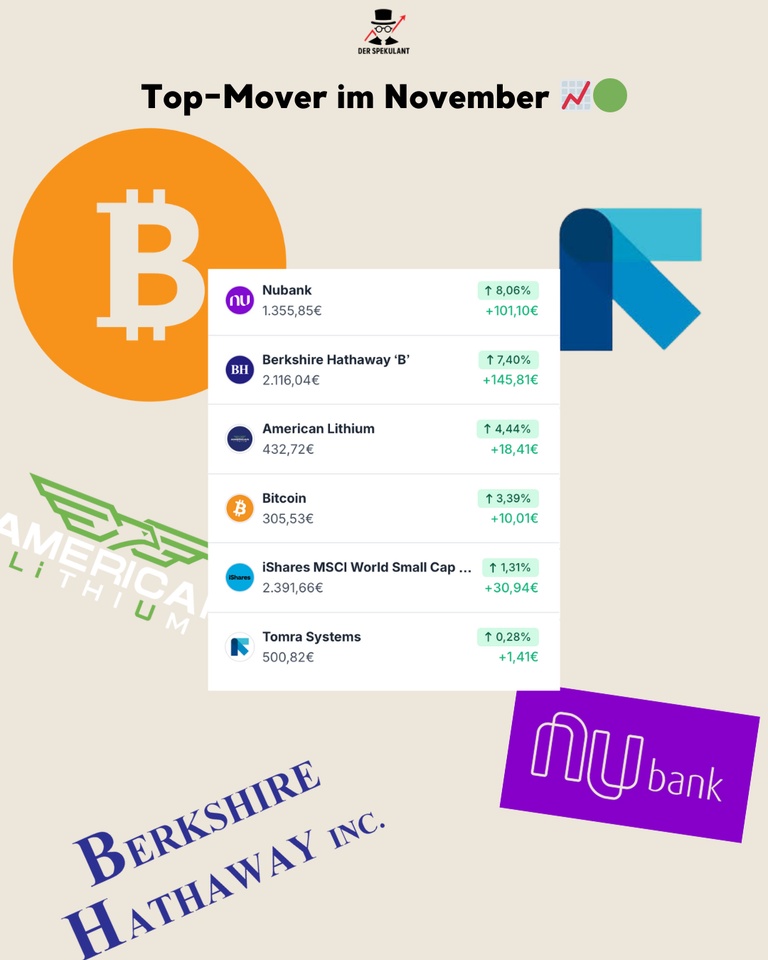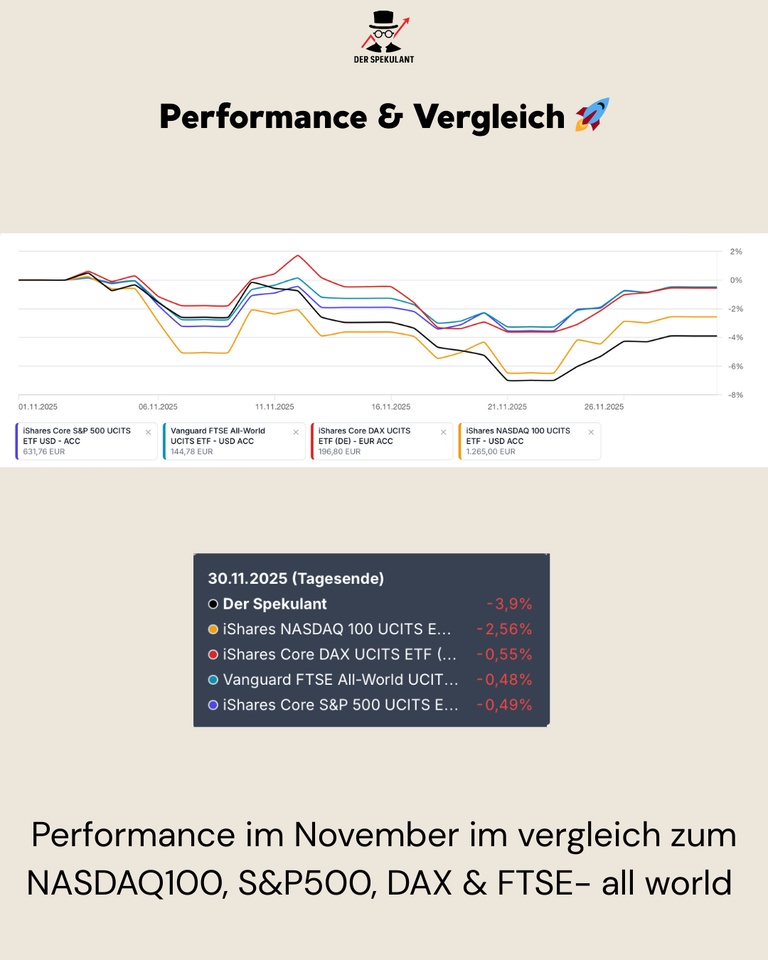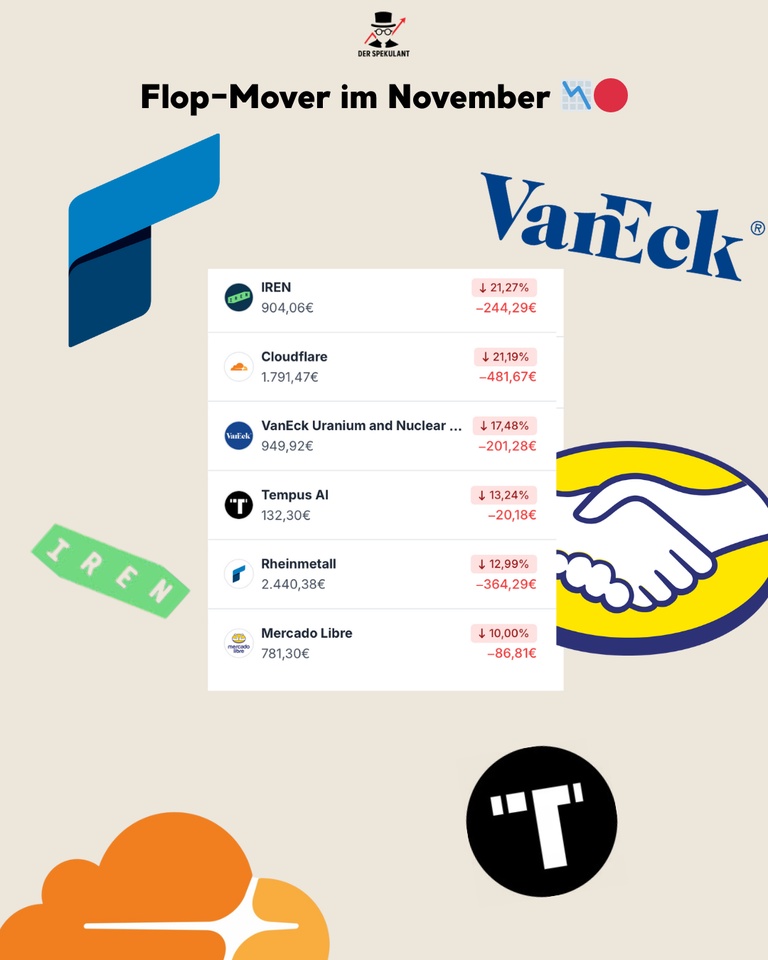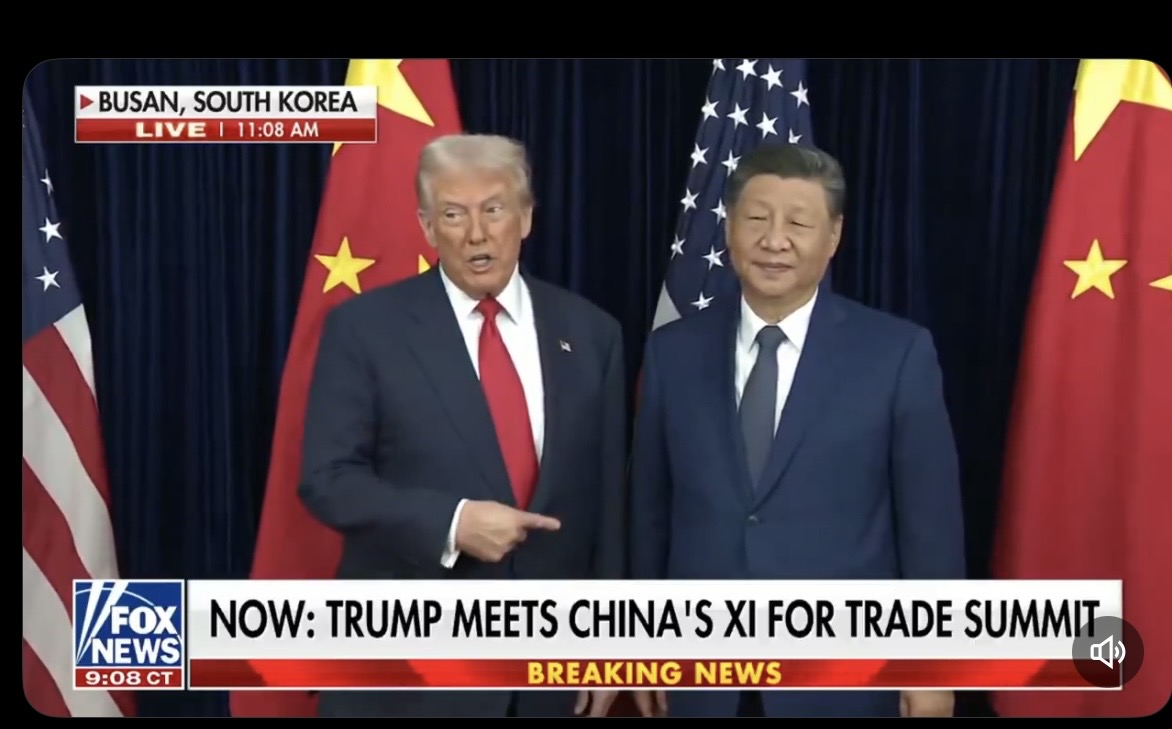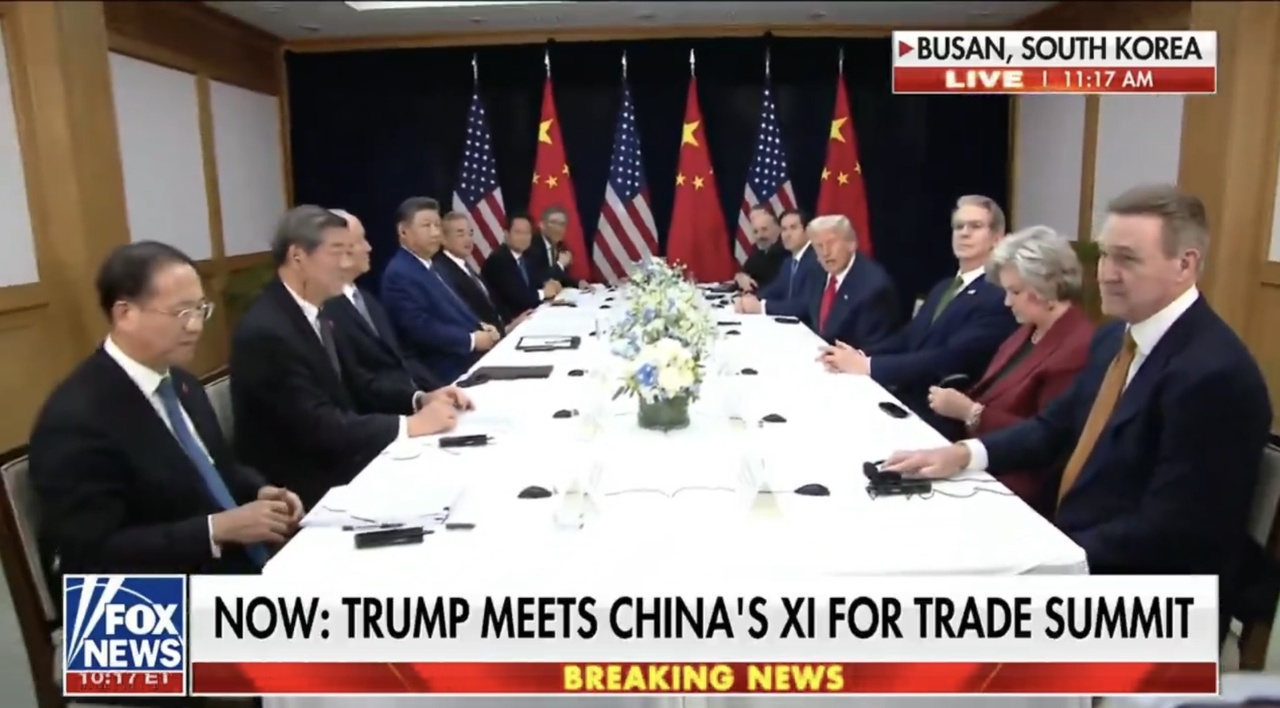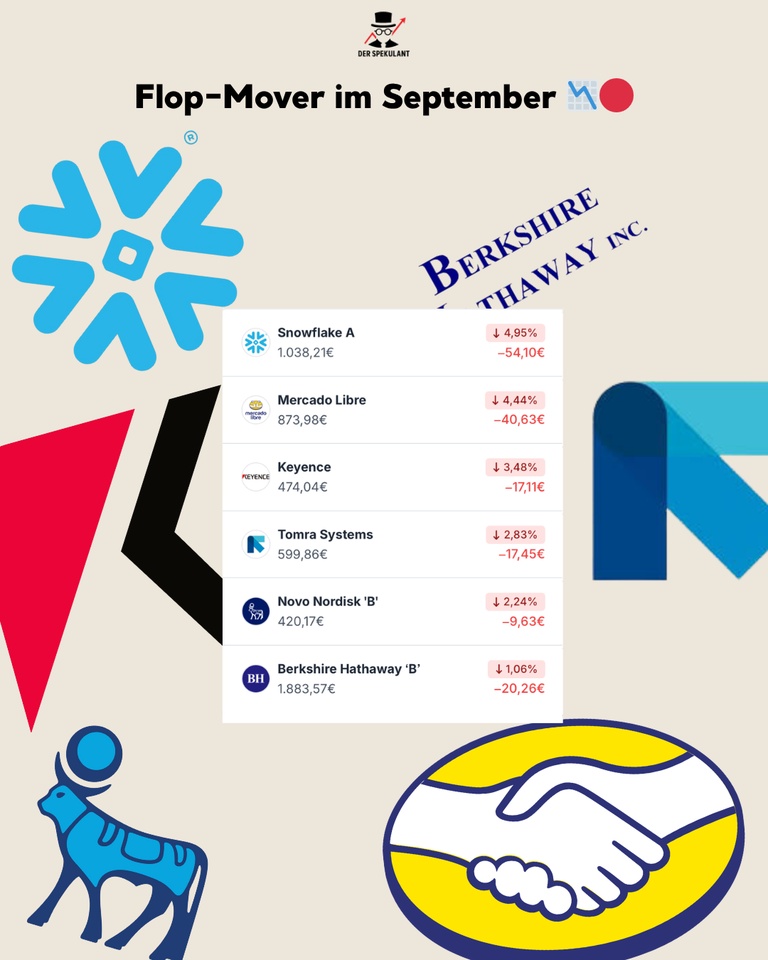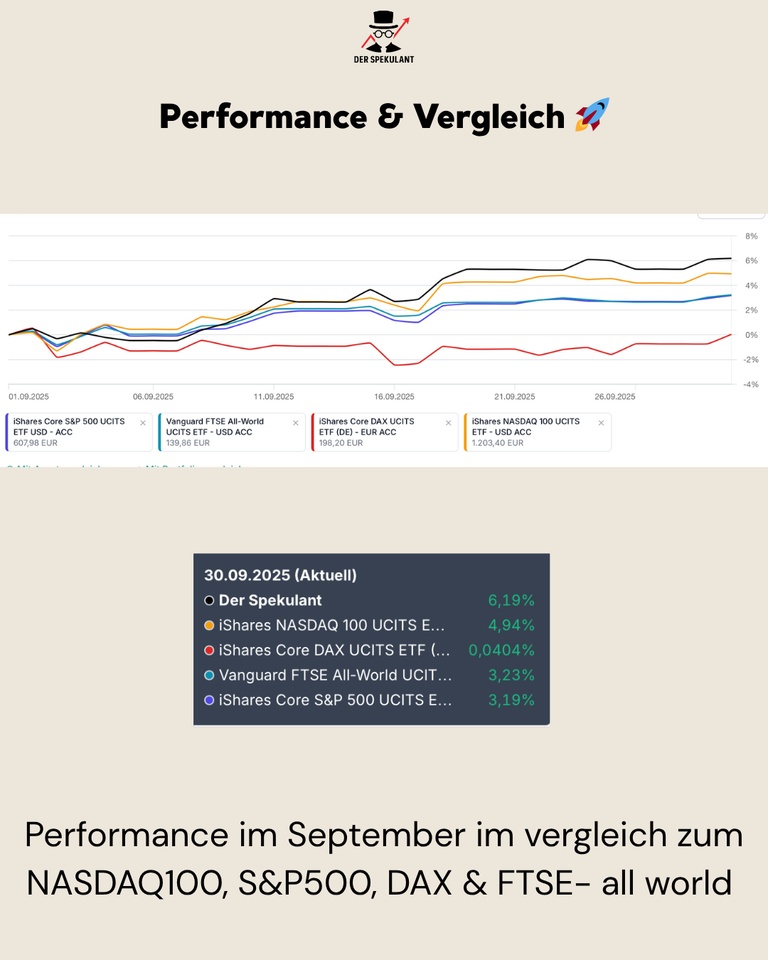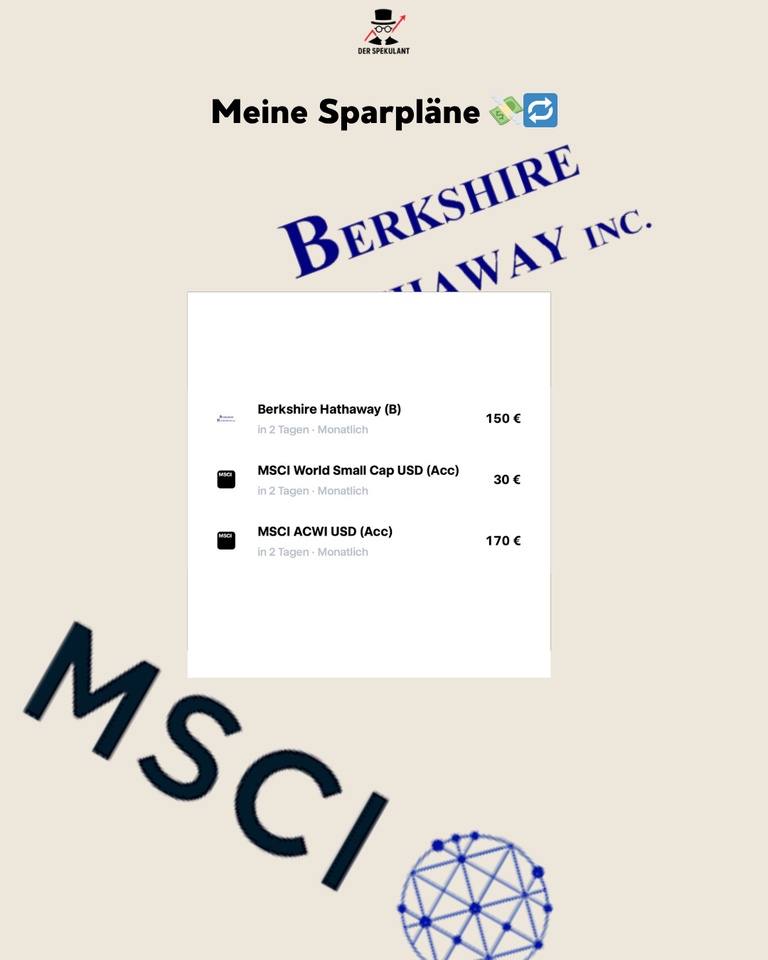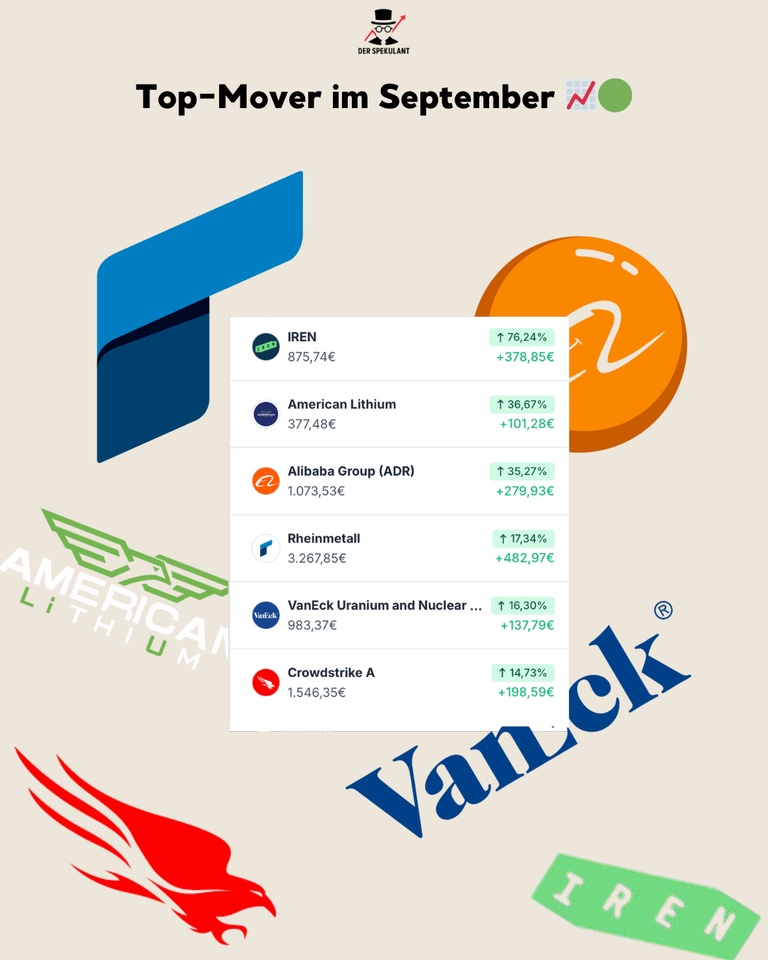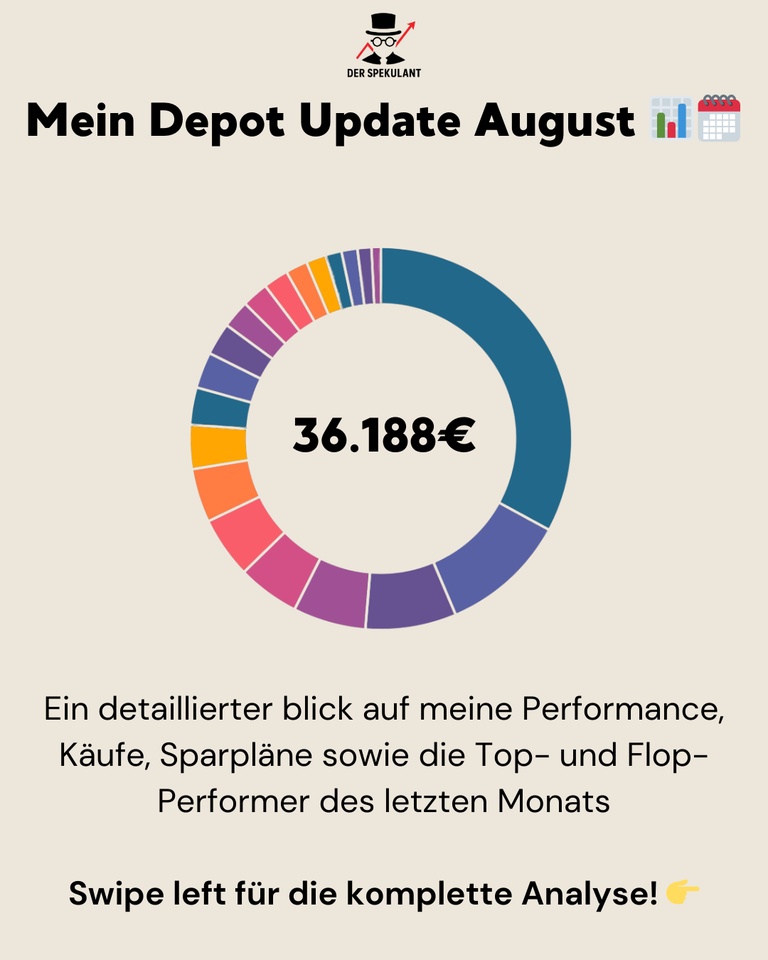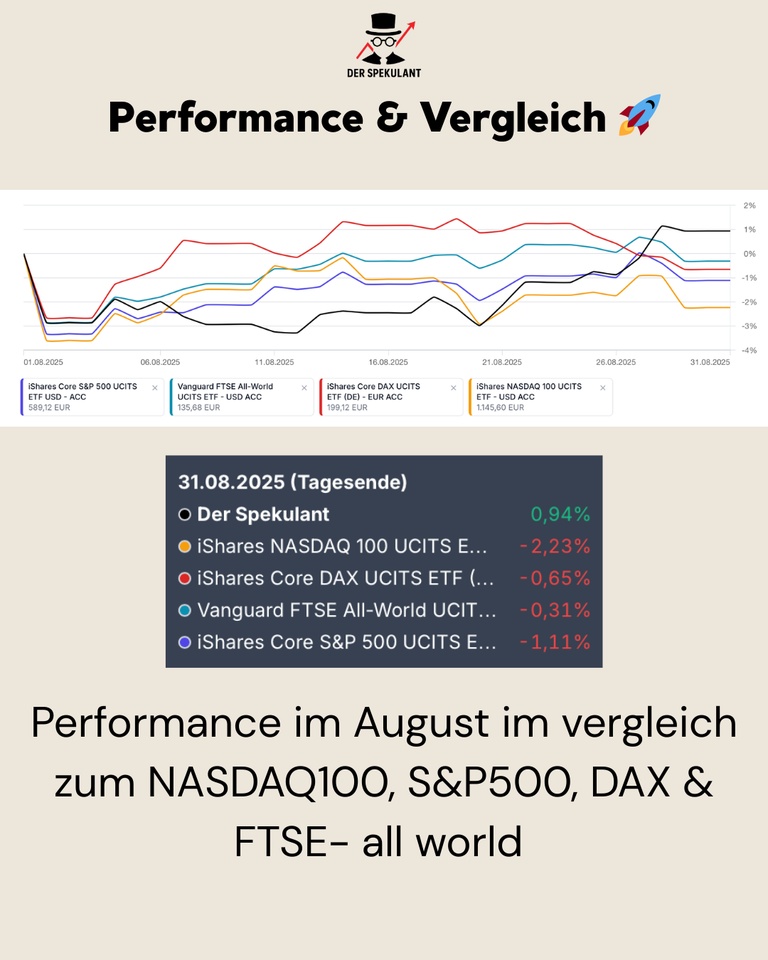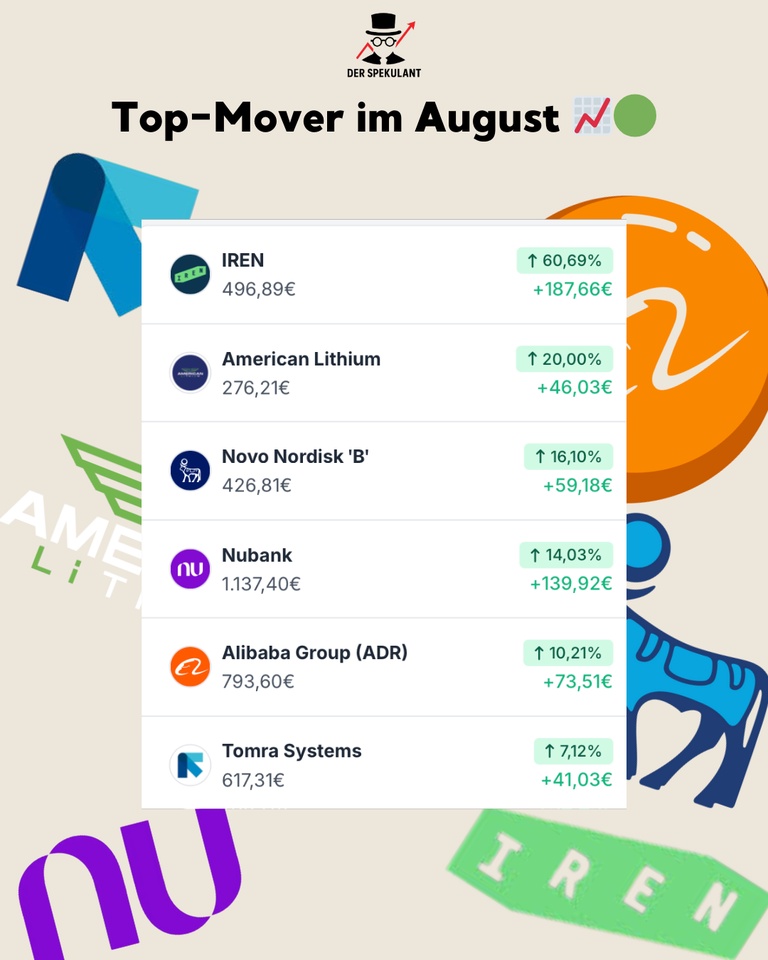After a stable October (+6.2%), there was a clear countermovement in November.
My portfolio fell to 39.328€ and was thus -3,9% compared to the previous month.
The main drivers were the strong sell-offs in AI software, uranium, mining and defense - precisely those areas that are overweighted in my allocation.
Despite the setback, the year as a whole remains strong:
👉 Year-to-date I am still at +20.4% - solidly in the green.
1st performance & comparison 🚀
November was clearly characterized by risk-off mode. While broader indices remained stable, highly volatile future themes corrected much more strongly.
My portfolio:
-3,9%
NASDAQ 100:
-2,56%
S&P 500:
-0,49%
DAX:
-0,55%
FTSE All-World:
-0,48%
The underperformance is fully explainable:
Uranium, AI software, bitcoin mining and defense were under pressure - all segments that my portfolio partly tracks. But we remain calm and use attractive setbacks to buy.
Positive:
The long-term trend structure remains intact, YTD +20,4% clearly show: The overall path is right.
2. my savings plans & allocation 💶
The focus remains unchanged on strategic liquidity and consistent allocation.
Important in November:
👉 I bought Bitcoin for the first time.
This expands my structure specifically in the direction of digital assets - a building block that has shown relative strength despite market volatility. We entered at €74665 and are trying to use the 30% drop since the ATH to build up a small anti-cyclical position.
My savings plans are continuing as usual and remain the tactical tool for exploiting market opportunities in a disciplined and unemotional manner.
3rd top mover in November 🟢
The month was led by Nubank ($NU), which was up +8,06 % benefited from strong user numbers and continued high demand for credit in Latin America. Berkshire Hathaway ($BRK.B) gained +7,40 % driven by solid insurance profits and defensive positioning in the current market environment.
American Lithium (+4.44 %) showed a technical recovery, while the Bitcoin purchase ($BTC (-0,03%)) in my portfolio with +3,39 % had a direct positive effect. Also small caps (MSCI World Small Cap ($WSML) +1.31 %) also performed stably. Tomra Systems ($TOM) rounded off the list of winners with a slight gain of +0,28 % driven by an incipient recovery in demand in the recycling segment.
4th flop mover in November 🔴
The month was much weaker for my highly volatile AI and energy segments.
IREN ($IREN) fell by -21,27 % the strongest - burdened by pressure in the mining sector and falling BTC margins. Also Cloudflare ($NET) also fell -21,19 % triggered by risk-off in the entire software/infrastructure tech sector.
The VanEck Uranium ETF ($NUKL) slipped -17,48% after falling spot prices and geopolitical uncertainties led to widespread profit-taking.
Tempus AI ($TEM) (-13,24%) and Rheinmetall ($RHM) (-12,99%) suffered from a general revaluation of growth and defense stocks. Mercado Libre ($MELI) closed the month with -10,00 % also significantly weaker, weighed down by consumer data from Latin America.
5. conclusion 💡
November was a classic rotation month: risk-off in speculative future themes, stability in value, fintech and more defensive positions.
❓Question for the community
Which position surprised you the most in November - positive or negative?
👇 Write it in the comments!





